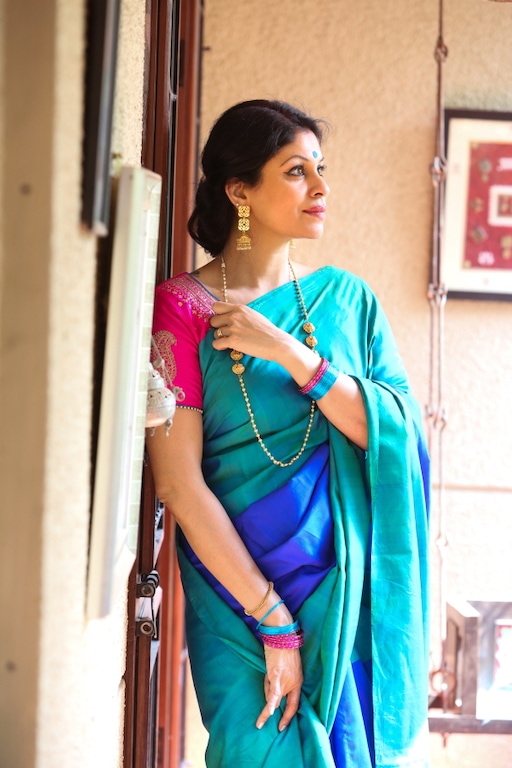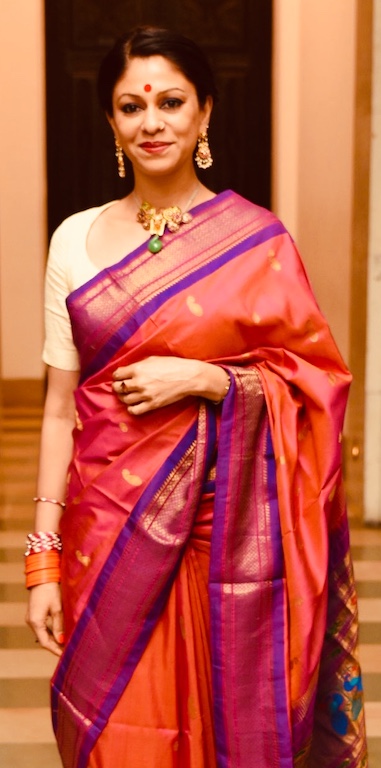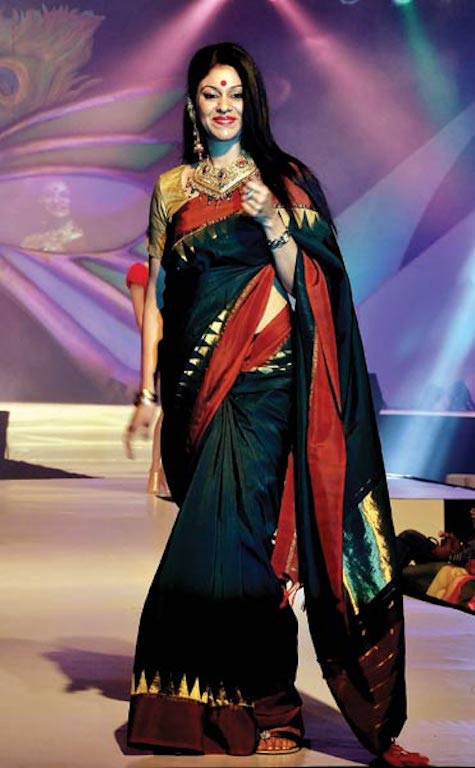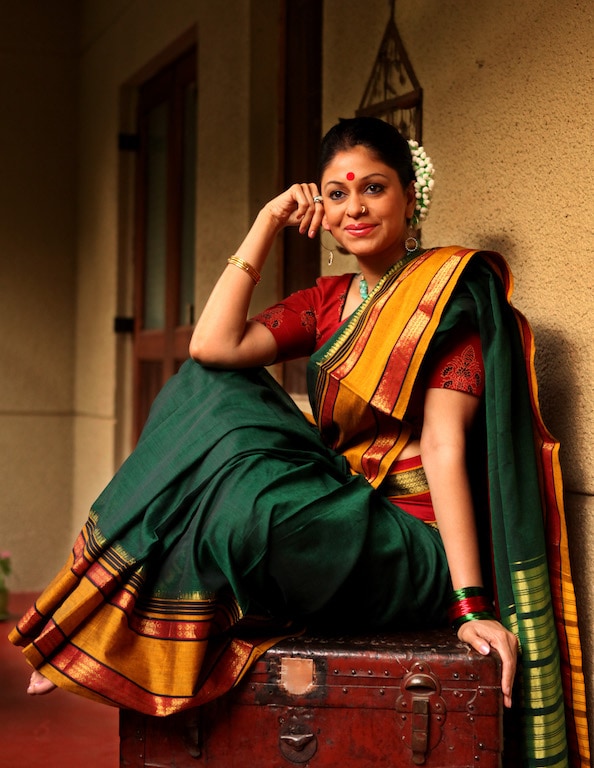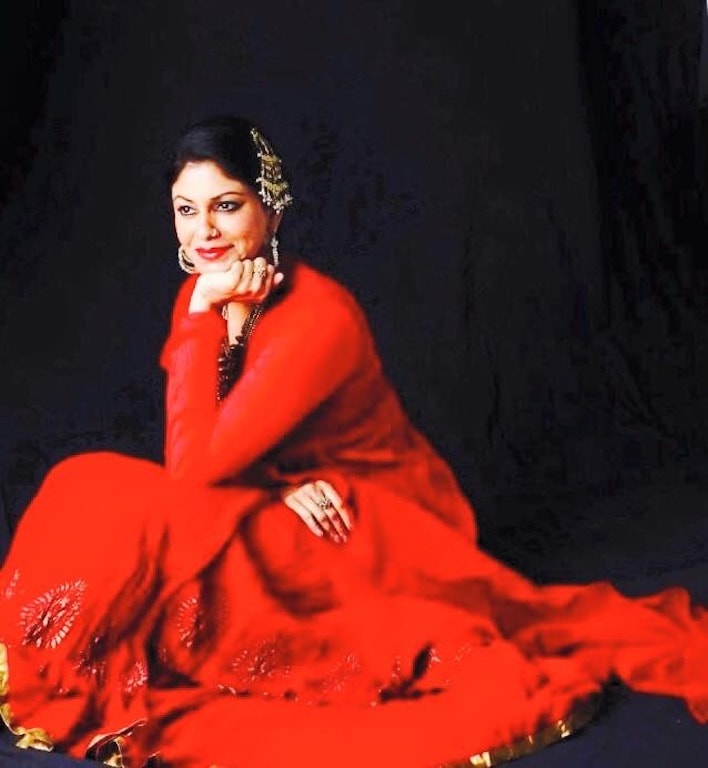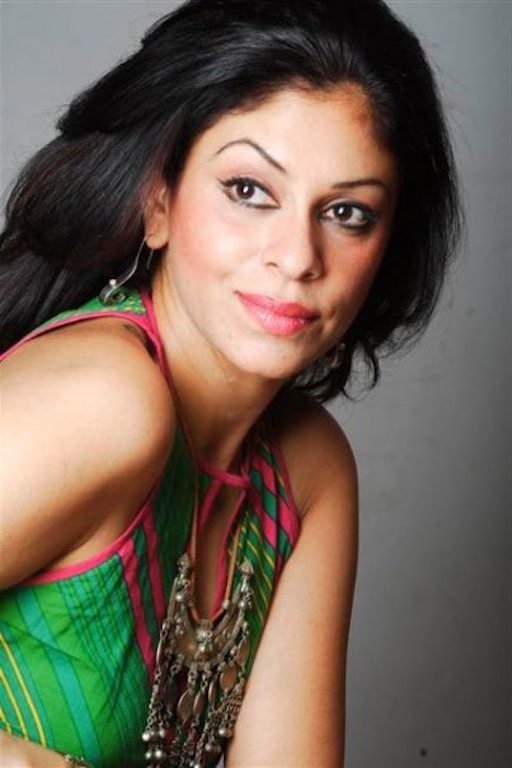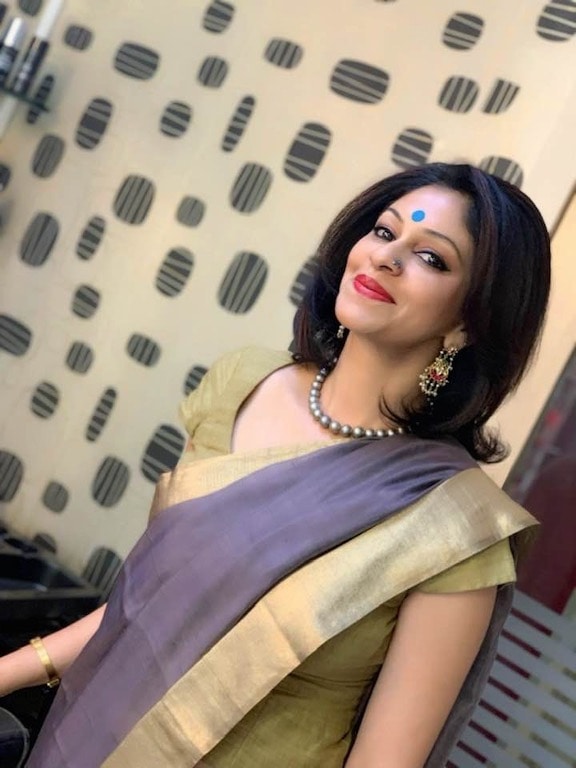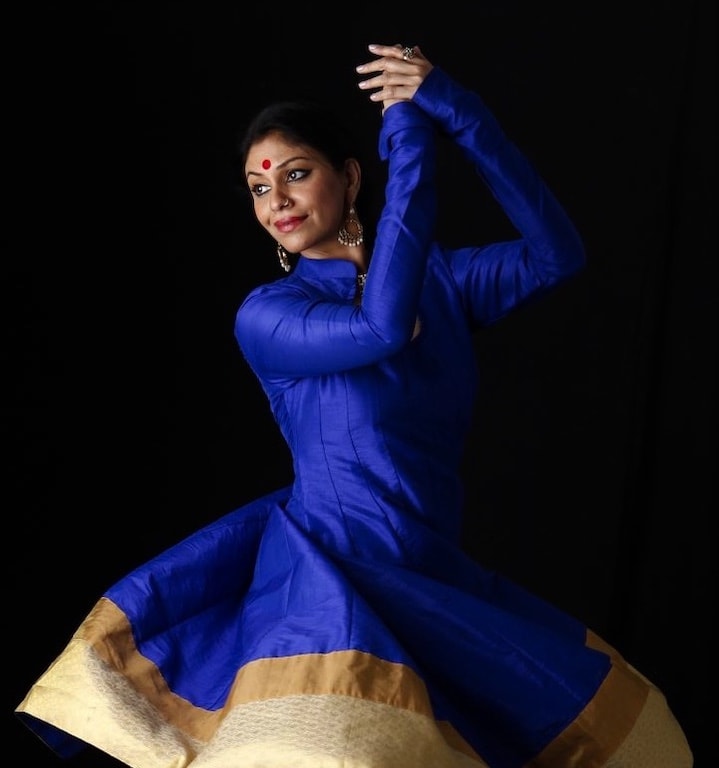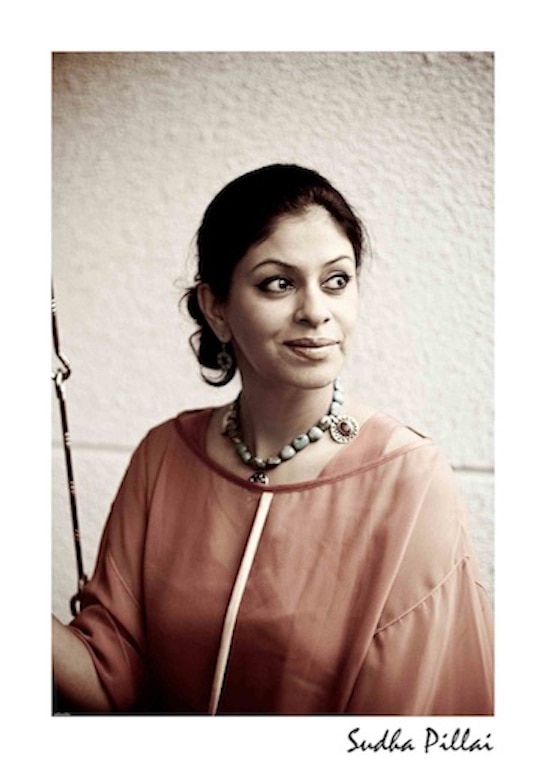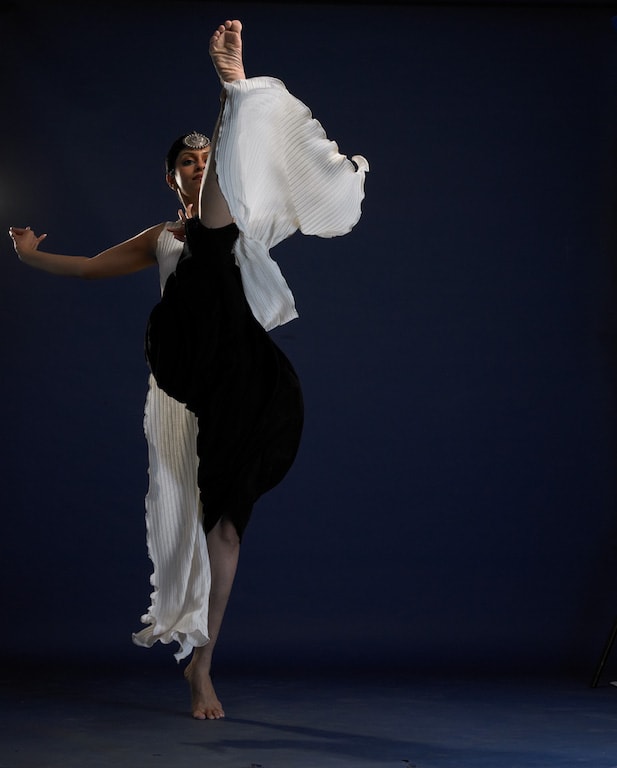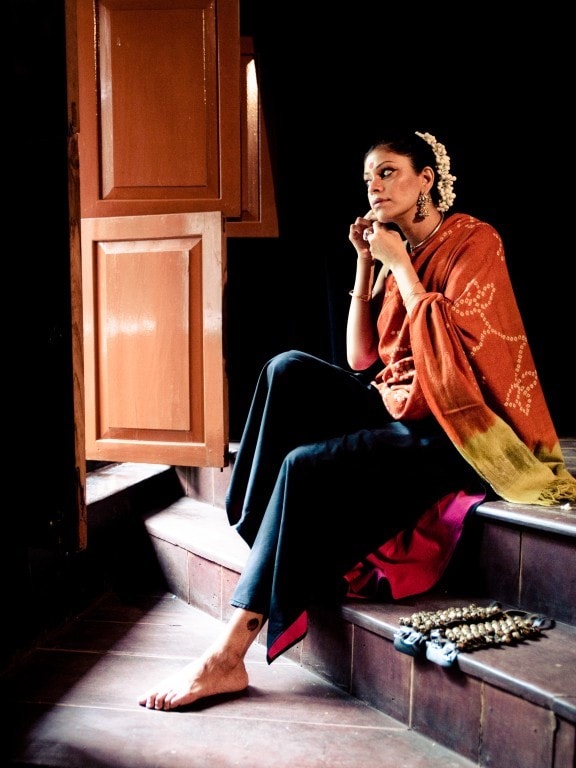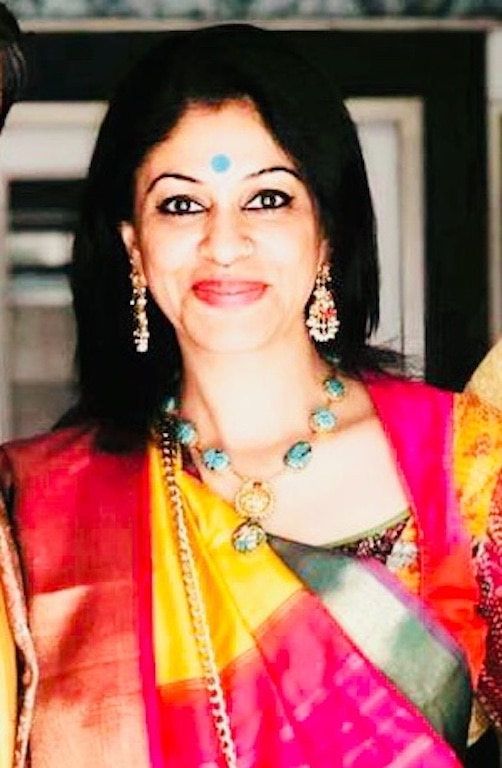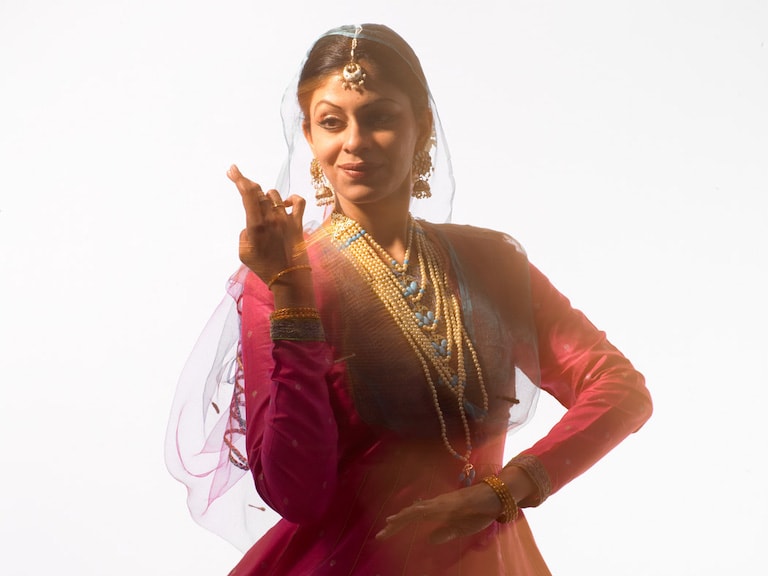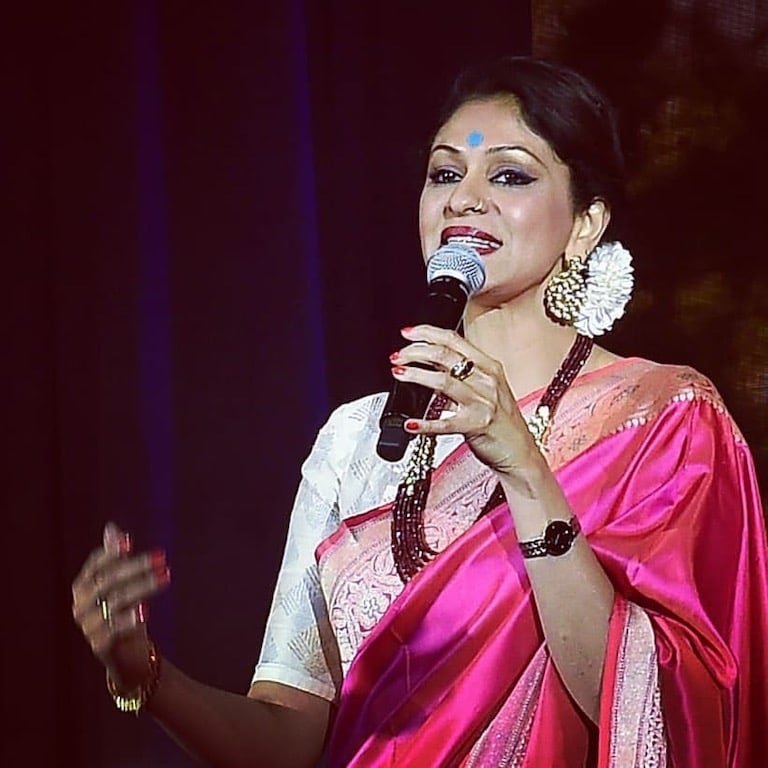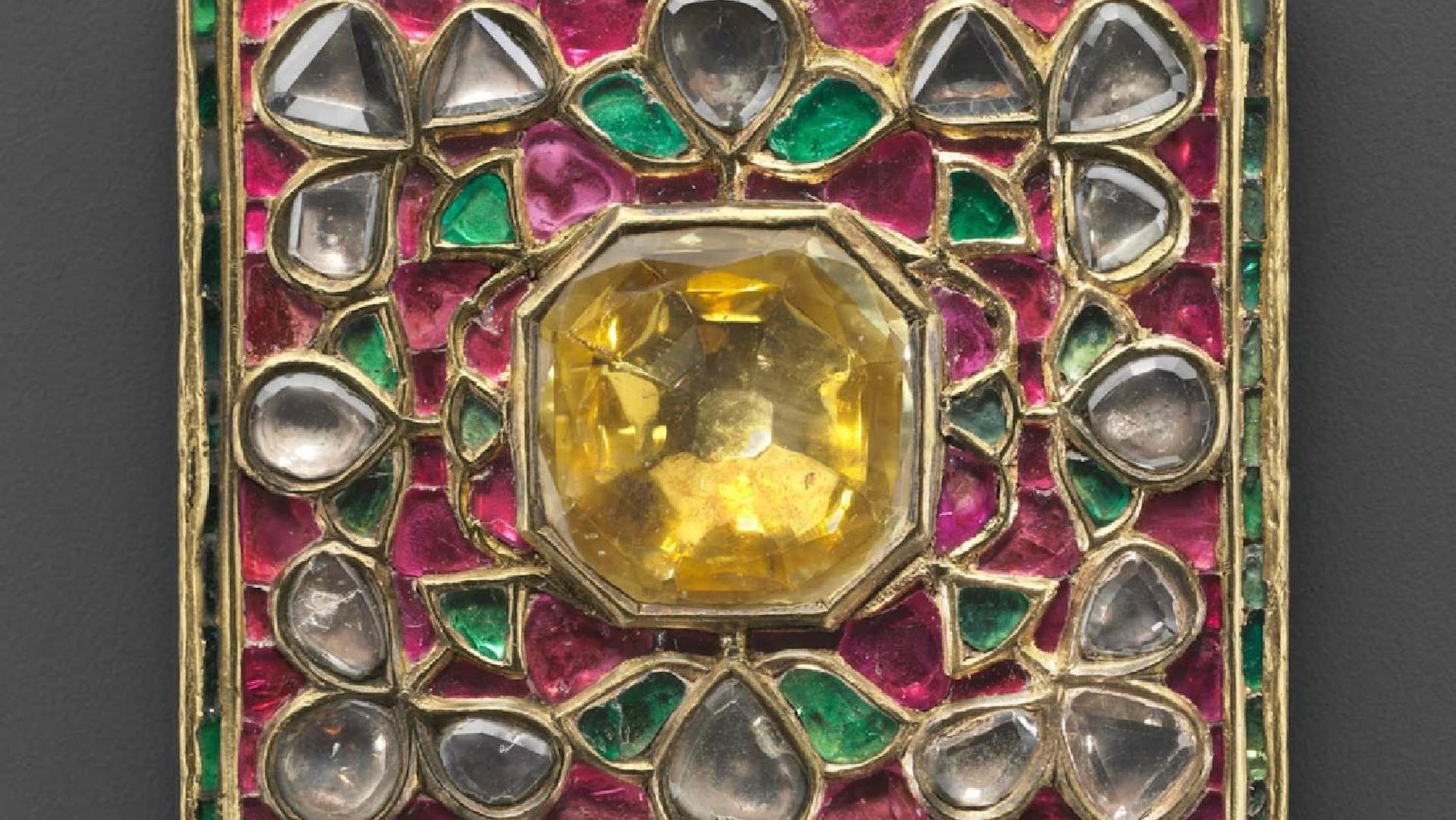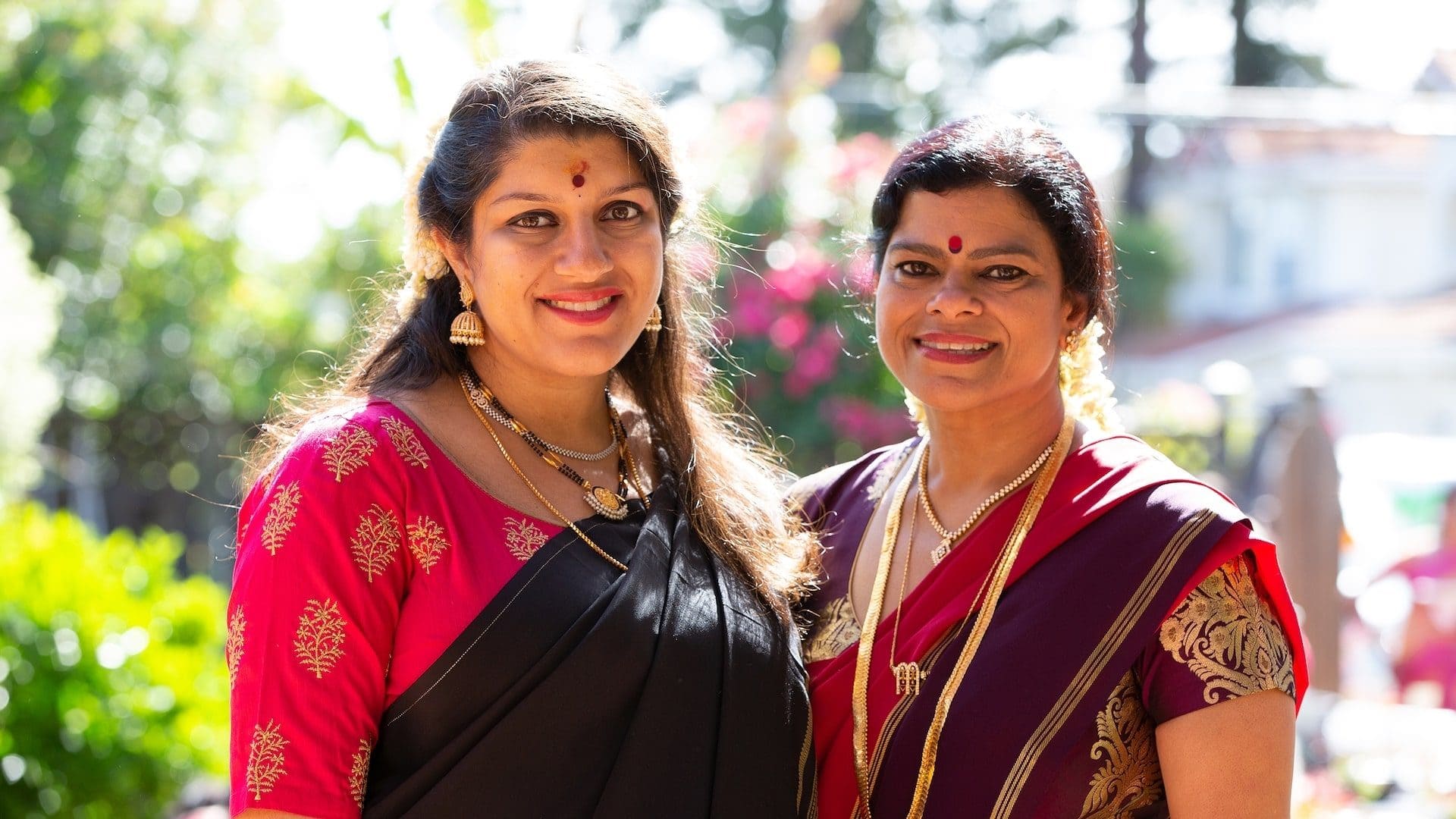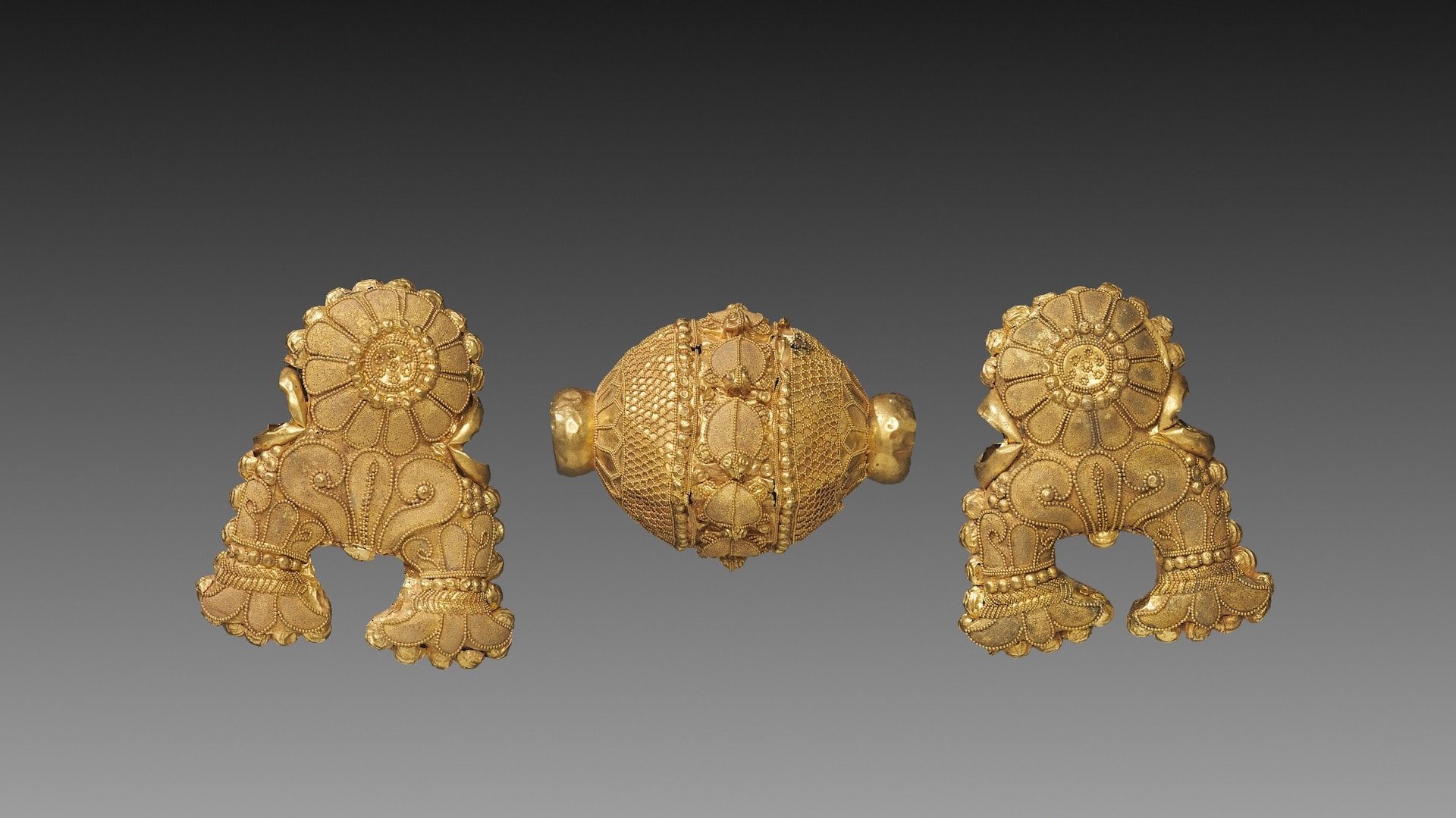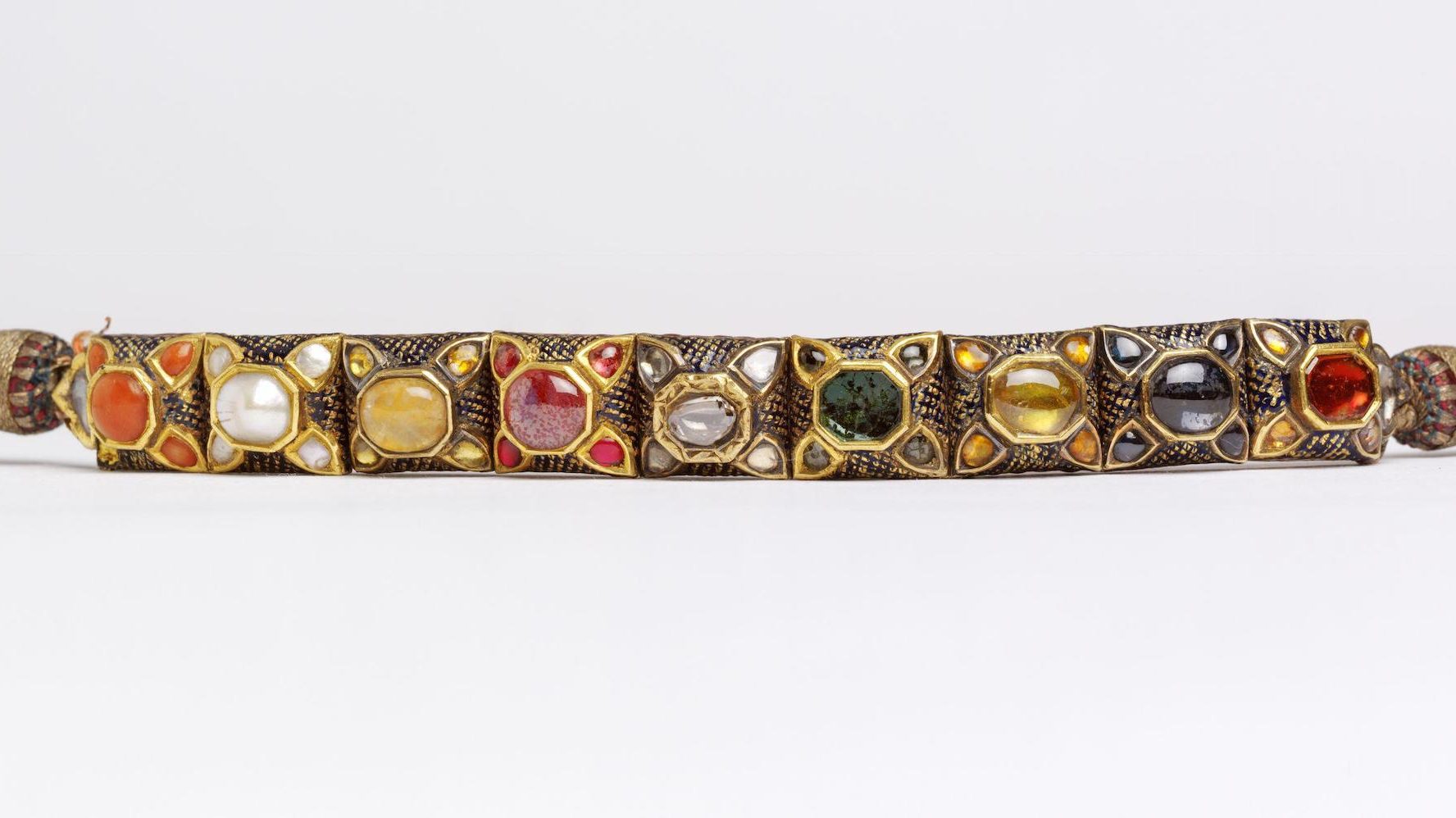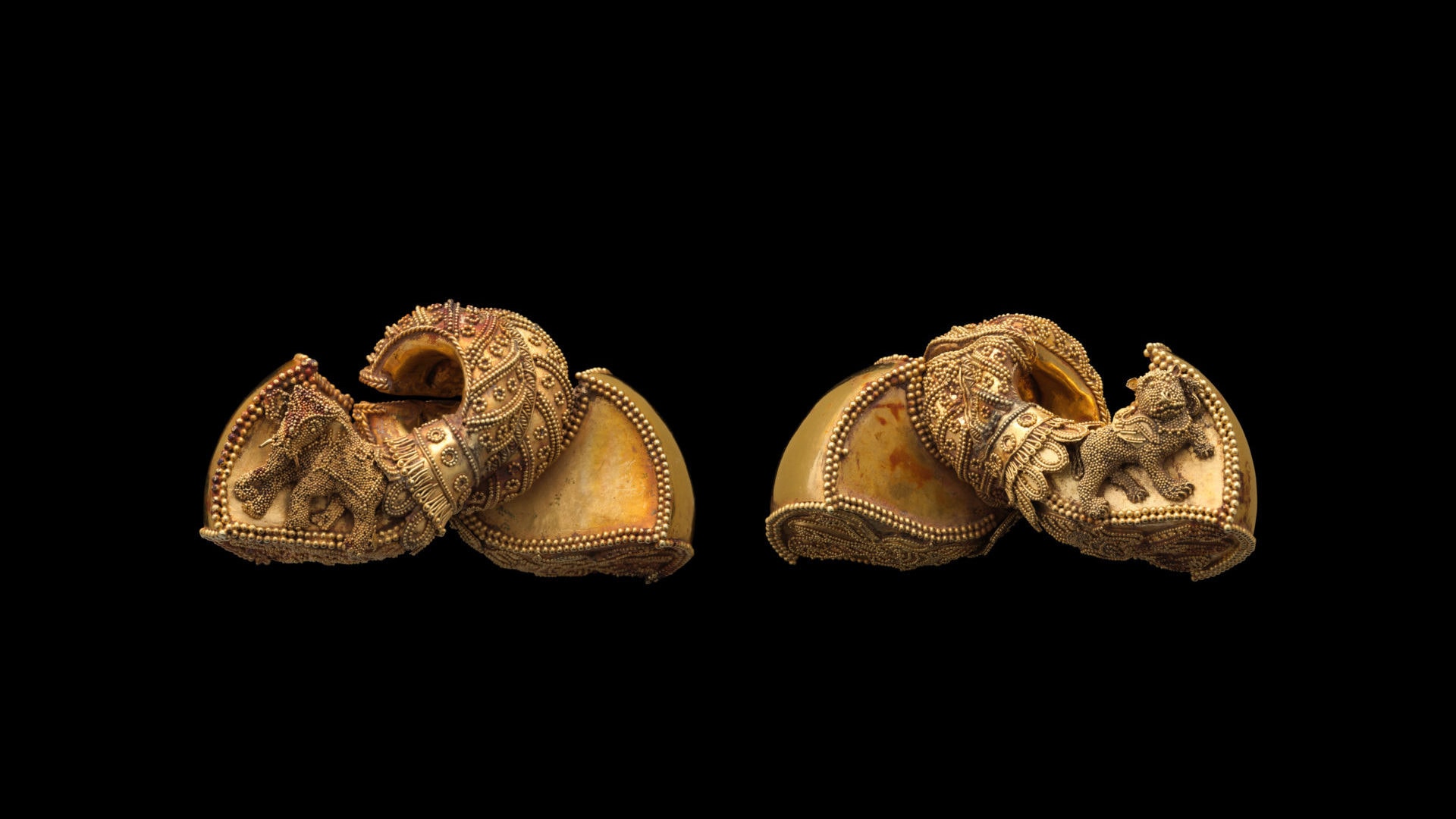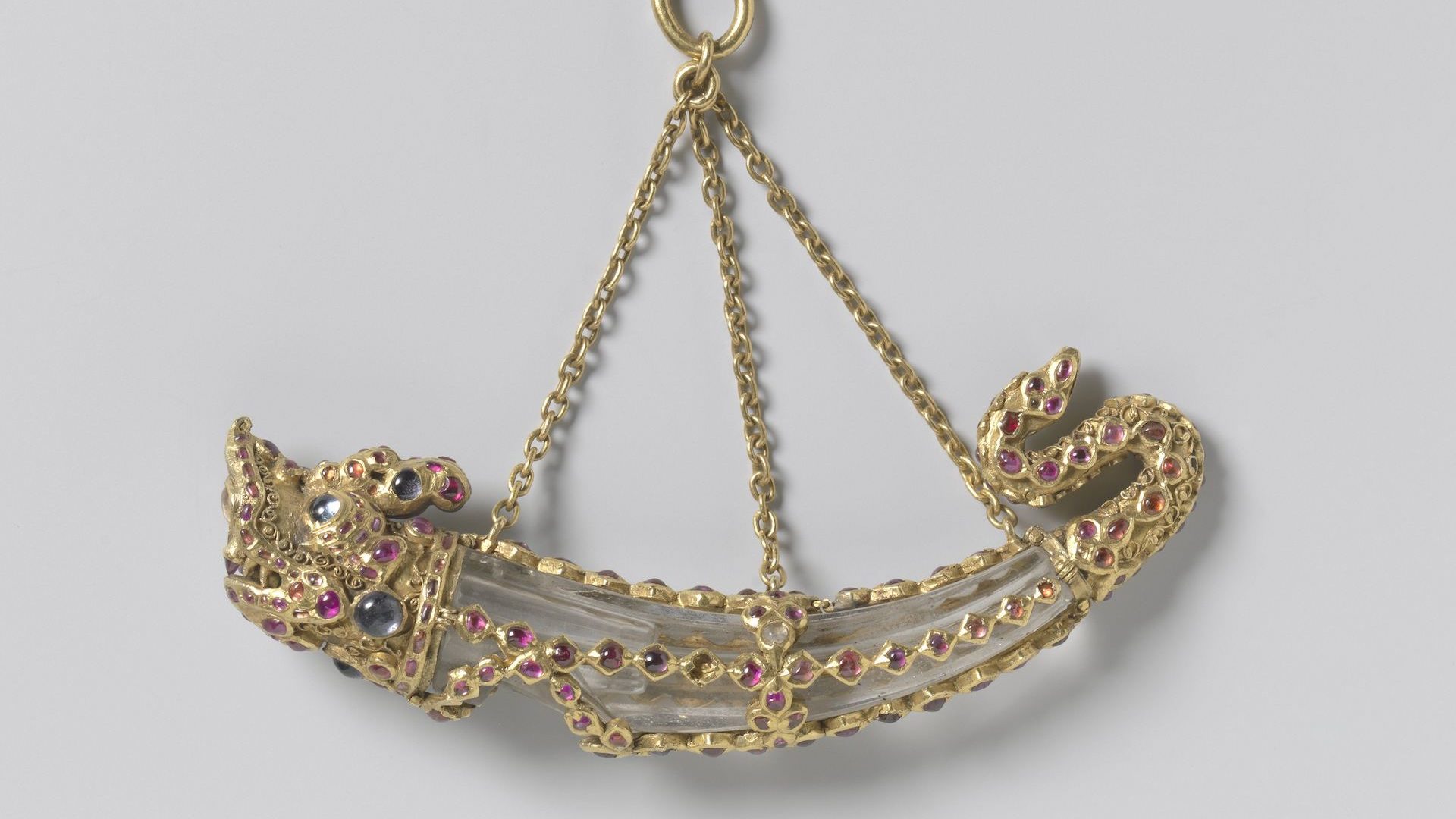What are your memories of jewellery growing up?
My childhood memories are like a bouquet of sensory perceptions and jewellery features quite prominently in them. I recall the sound of my mother’s gold and glass bangles clinking delicately, the gentle rustle of her silk ‘pallu’, as she opened the iron almirah that housed her Kanjeevarams and jewellery. Once open, the fragrance of her favourite perfume- L’air du temps would waft out as she placed her velvet boxes and pouches that held her meager but stunning pieces of jewelry on the bed where she then sat, wearing each piece patiently.
Also, dance and the sound of the ‘ghungroos’ is almost a womb memory. My earliest memories feature me touching rows of ‘kundan’ costume jewelry as they were handed out to dancers for a performance. Shopping expeditions in Chandni Chowk to procure them. Helping the dancers wipe down their jewelry off make-up and sweat post performance!
Tell us about your parents
My mother came from a Saraswat Konkani Brahmin home and there were special gold and coral pieces that used to be made in ‘baby sizes’ for infants. My first ear piercing got me tiny gold and coral hoops. In my childhood pictures, I see the familiar coral and gold necklace around my neck as a less than a year old me chews on my mother’s ‘Mangalsutra’(which was an Iyer ‘taali’ strung on a thick gold chain)
My father’s family were Iyers from Mayavaram. I grew up looking at a black and white image of my ‘Paati” in her nine yard saree wearing stunning diamond studs, mookuthi (nose rings) and a bullock (septum ring). A beautiful temple jewelry choker and several long gold chains adorned her as she looked benignly and shyly at the camera!
Can you tell us a little about yourself and your family?
I was born in an artistic home and had quite a bohemian upbringing. My mother, Dr Maya Rao was a legendary Kathak Guru, a world-renowned choreographer and the kindest soul I will ever know. She pioneered the rejuvenation of Kathak and created pedagogic tools, support systems for the systematic training in Dance education, post independence.
My father was a musician, impresario and an avid book collector/dealer and if I might add, was devastatingly handsome!
Both were born and brought up in Bangalore where they created a fertile ground for the performing arts in an otherwise idyllic, lazy city as early as the 1950s.
We lived in New Delhi and travelled in the summer to our vintage ancestral home in Bangalore.
My Konkani side of the family who lived across the globe brought me up. This coupled with Ma’s incessant dance tours; I got to see the world from a very early age. As a little girl, one day would see me on a train to Imphal and a week later in Arequipa, putting ‘Altaa’ on the dancers’ feet!
What is your favourite piece of jewellery that your mother or grandmother wore?
There is this very special heirloom piece that I possess and a very mesmerizing story that comes with it!
My maternal grandfather was an architect and was commissioned to create the main Mysore palace gate by the royal family. The Maharaja was so pleased with this gate that he took out a humongous diamond and emerald ring off his finger and gifted it to my ‘Ajjaa’ in appreciation!
My grandmother took this ring and as was her habit, packed all her children on a train to Mangalore, where her jeweler lived. The children and her would stay there for a couple of weeks at a lodge as she designed jewelry along with a master goldsmith! She transformed the aforesaid ring into 3 pairs of earrings for her three girls.
Tell us more about this piece? Who got what?
My mother being the eldest got the choicest diamonds and emeralds (my aunt’s still mention this with a very slight tinge of envy). My mother retained the original design and wore it for her wedding and many landmark events through her lifetime. She gave them to me around 15 years ago. It is a stellar example of old world ‘Kaarigari”! A light coloured emerald surrounded by stunning diamonds in a traditional closed setting. The design both delicate and strong marries victorian and south Indian design idioms.
In the words of renowned jewelry designer/expert, Shreedevi Deshpande Puri- “These earrings are a fine example of the colonial influence on Indian design while retaining the south Indian design sensibility”
Each time I look at it, the stories around it reverberates in my mind and I am filled with a sense of pride at the artistry, and resourcefulness of my grandparents, my mother and in a convoluted way…the Mysore Maharaja!
What does Shringaar mean to you?
Shringaar refers to both the amorous sentiment and to the art of adorning oneself in the Indian dance realm. As a dancer, both these connotations are an integral part of my identity, on and off stage.
I strongly believe that only when one loves themselves do they have the power, the wherewithal to love another or others. Taking care of oneself is an indispensable facet of life.
Shringaar echoes this philosophy for me. The element of love/ passion and adornment as twin aspects.
Adornment not just of the body, but simultaneously, of the mind and soul too.
What is your jewellery style, interest and routine?
The pieces of jewelry, I have on me on a daily basis have become my good luck charms, an important extension of my personality even.
The special pieces are for special occasions. As I wear these pieces, in a sense I am inviting good times, affection, aesthetics/ beauty, while remembering a past where I bought or acquired these pieces.
I balance tradition and modernity in my life and dance. My choice in jewelry too echoes this philosophy. For instance, on the one hand I might have a classic Nawabi Navratna choker and I will be hugely drawn to an Avant-garde cloth and metal neckpiece at the MOMA museum shop!
A lot of my silver jewelry has been sourced from the ‘Lambaanis’/ gypsies of Sandur, Rajasthan and Gujarat; tribal pieces from Afghanistan, Kazakhstan, Kyrgyzstan. My mother too had a huge collection of ‘junk’ jewelry from her youth, which I repurposed, and still wear. Most of the above with their visual appeal and rusticity are great conversation starters at events!
Do you believe in the healing nature of jewellery and gems?
I do believe in the healing nature of gems and metal. I wear certain precious stones on my rings on the advice of my astrologer. I designed them with a dear friend and they have become a part of me now. I am drawn to stones that invite auspiciousness, healing, tranquility, prosperity and wisdom. I have very few pieces just bought off the shelf. Most have been designed by me or been repurposed from older pieces that I cannot part with. These special stones make an appearance in most of these pieces of jewelry. Each piece therefore is attached to a memory, a story, a sentiment and quite often a space.
How do you wear jewellery? What is your go-to piece and why?
I am very organised and keep my daily wear jewelry in separate boxes. Gold in one, silver and costume jewelry, in others. Needless to say they are further segregated into earrings, neckpieces, bangles and the like.
So, I know exactly where each piece is.
I never step out of the house without my earrings and lucky rings. I have my lucky ‘travel Ganesha’ necklace which is a dual tone ( gold and silver) pendant with pearls, rubies, fixed on a labradorite bead chain. My solitaires have often seen me skip long immigration queues! So they always travel with me!
I wear a gold bangle, which was made out of gold from my mother and my bangle combined. It is embedded with precious stones that I associate with positivity. This is my constant piece of adornment as well!
For the stage too, I have lucky chokers (always from Lucknow or Chandni Chowk in Old Delhi), a blingy ring (bought off a street shop on commercial street) that I always carry in my Dance jewelry case.
If you could commission a piece of jewellery (cost no bar), what would you want made?
I have always wanted to get a 2.5 inch beaten gold clasp with a rustic rim in rose gold. The body of the piece should feature a shloka to the all pervasive feminine divine. The shloka , written in Devanagari script ( calligraphy resonating ancient palm leaf writing)should be embedded into the clasp with sapphires, diamonds and Burmese rubies in an interesting color gradation.
Who are your jewellery and style icons?
My mother was a complete aesthete and for me her choice of jewelry and sarees remain unparalleled.
For vintage jewellery, the Maharanis of Rajasthan, Cooch Behar for their exquisite taste in ‘Jadau’, Minakaari jewellery and trademark pearl strings.
The Nawabi, Hyderabadi repository and the chunky yet delicate Temple jewelry of the royal families of Mysore and Tanjore.
The ultimate style icons that perfectly matched their jewelry, attire and attitude- the ‘Tawaifs’ and ‘Devadasis’ of India. Who were also the most important seed receptacles, carrying forward the legacy of dance with panache!
From the west,
- Bvlgari’s bespoke pieces on Elizabeth Taylor. Vividly recall her in their diamond and emerald pieces. Pieces that became iconic thanks to her.
- Audrey Hepburn in the Tiffany necklace in “Breakfast at Tiffany’s”
Do you have a question about jewellery that you have always wanted to ask?
Why do certain Kannadiga and Telugu ‘Taalis’ have the shield like discs on them? Are they evocative of a ‘Kavach’/armour or a metaphor for mammary glands?
I have seen stunning ‘Tantrik’ jewelry on yesteryear dancer- Shanta Rao. Is there such a genre at all? Where can one source/see them?

